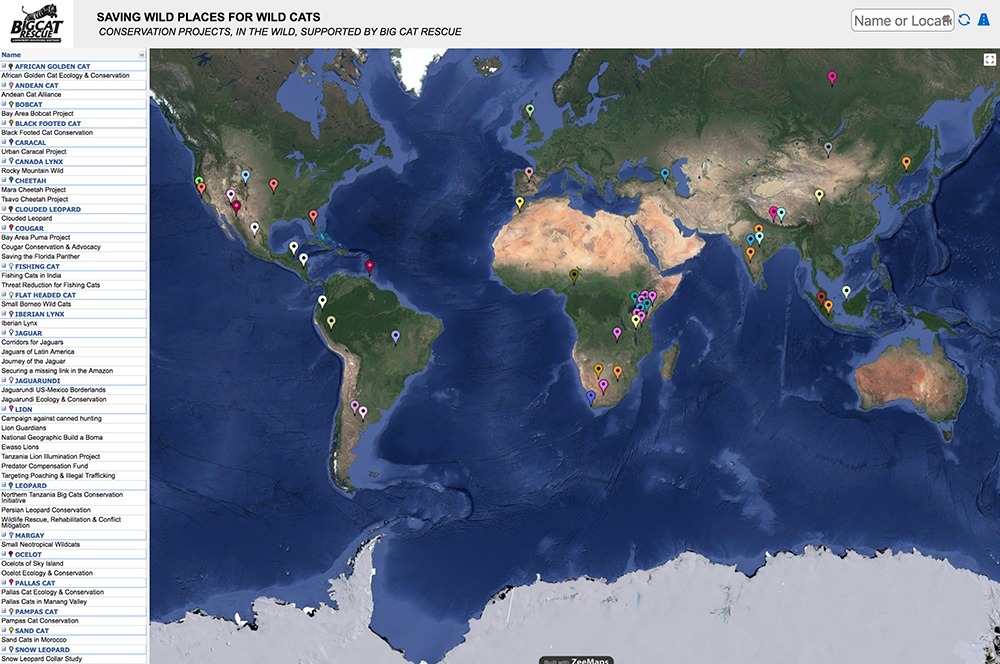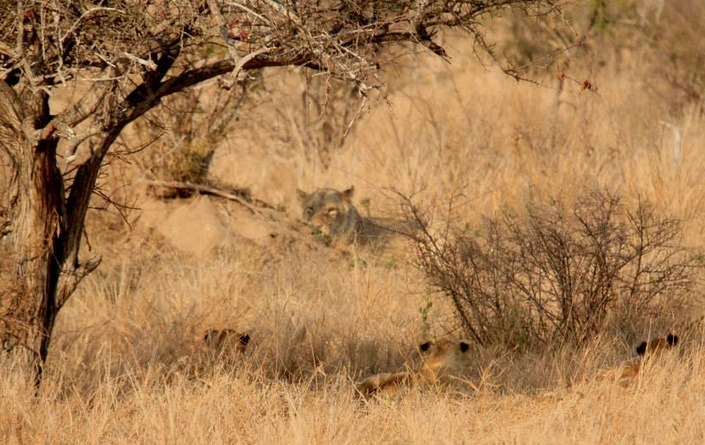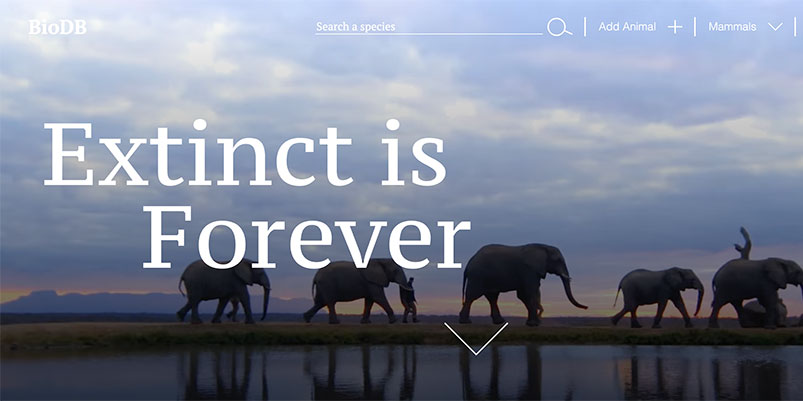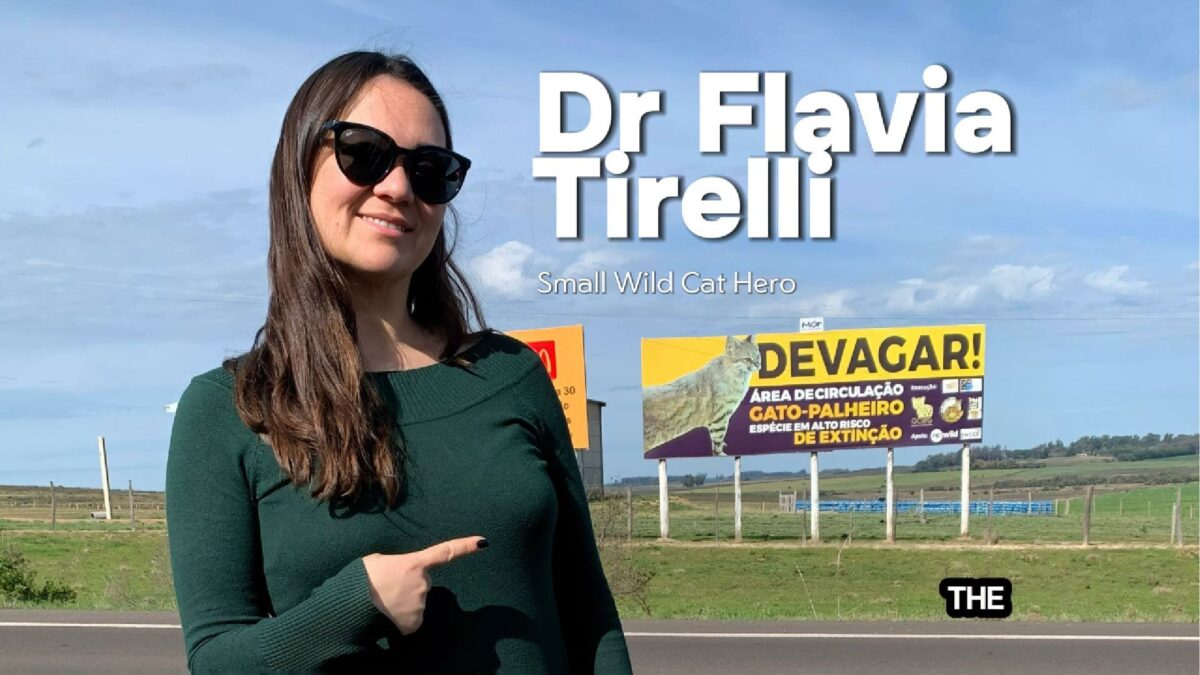InSitu 2017
Big Cat Rescue’s In Situ Conservation Work
2017 Saving Wild Places for Wild Cats
Click the pins on the map, or the species on the left, to get all of the details!
Research and Articles by Lauren Buckingham
See Current year in situ work at: https://bigcatrescue.org/insitu/
See InSitu work from 2016 and before here: https://bigcatrescue.org/insitu2016/
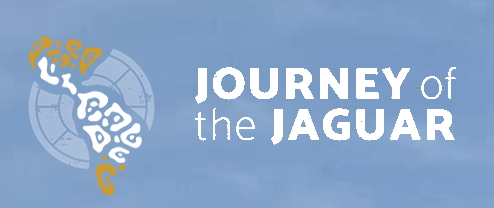 Almost two decades ago, Panthera co-founder Dr. Alan Rabinowitz catalyzed a profound shift in jaguar conservation. All jaguars, it had recently been discovered, shared the same DNA. That genetic integrity, preserved across thousands of miles, meant that jaguars were living and breeding and dispersing along a connected path throughout the entirety of their range. To save the jaguar, would require ensuring their safe passage along that path, from northern Mexico to northern Argentina. Christening it the Jaguar Corridor, Dr. Rabinowitz set the stage for one of the most ambitious conservation efforts in the world.
Almost two decades ago, Panthera co-founder Dr. Alan Rabinowitz catalyzed a profound shift in jaguar conservation. All jaguars, it had recently been discovered, shared the same DNA. That genetic integrity, preserved across thousands of miles, meant that jaguars were living and breeding and dispersing along a connected path throughout the entirety of their range. To save the jaguar, would require ensuring their safe passage along that path, from northern Mexico to northern Argentina. Christening it the Jaguar Corridor, Dr. Rabinowitz set the stage for one of the most ambitious conservation efforts in the world.
The 5,000 mile Jaguar Corridor meanders through protected areas, as well as places where humans have also made their mark: citrus groves, cattle ranches, palm oil plantations, and even the Panama Canal. It is in these mostly unprotected corridors where jaguars encounter the most danger. Loss of habitat and natural prey, plus increased encounters with humans that are often deadly to the cats, can lead to the isolation of jaguar populations. Their gene pools become more shallow, diminishing their legendary resilience.
Panthera’s Jaguar Corridor Initiative seeks to protect jaguars across their entire range. In partnership with governments, corporations, and local communities, Panthera is working to preserve the genetic integrity of the jaguar by protecting core jaguar populations and the vital connectivity that has sustained them for hundreds of thousands of years. In 2017 so far the initiative has worked in 3 areas:
The Yukatan
The Yucatan Peninsula has more tropical forest and more jaguars than anywhere else in Mexico, but an unprotected area between two national parks is leaving them vulnerable to isolation. Rampant deforestation to make room for cattle ranches, along with other human activity, raises the stakes for conserving jaguars as their populations fragment.
The Northern Corridor
Starting on the Arizona-Mexico border, this Journey tracks the jaguar through its northernmost range, from Sonora’s desert landscape, through the Sinaloa Corridor, to Jalisco on the coast. The Sinaloa Corridor is a critical connection between core jaguar populations. In this rugged terrain, where Mexico’s infamous drug cartels hide out, landowners are seeking help from local government leaders to unlock federal funds and the political will to permanently protect jaguars in the area.
Bridging the Gap
On the border of Colombia and Panama lies the Darien Gap, a swath of nearly impenetrable jungle whose remote location and dense foliage provides perfect cover for jaguars—and tough going for humans. From the Darien’s estuarine mangroves, where saltwater jaguars subsist despite little prey and perennial mud, to the Serranía de San Lucas, a critical link between jaguar populations in Central and South America that needs permanent protection.
Big Cat Rescue donated $1000 to this project. Read more about the project here: https://www.journeyofthejaguar.org
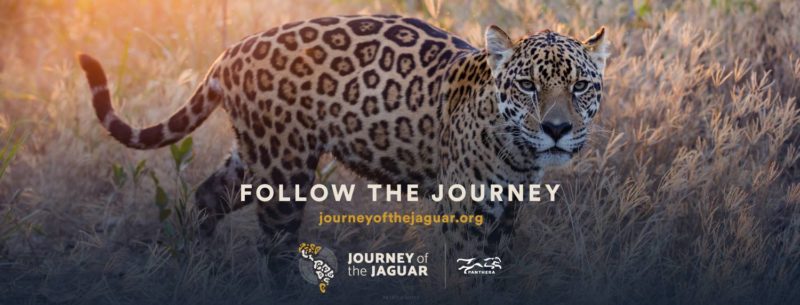
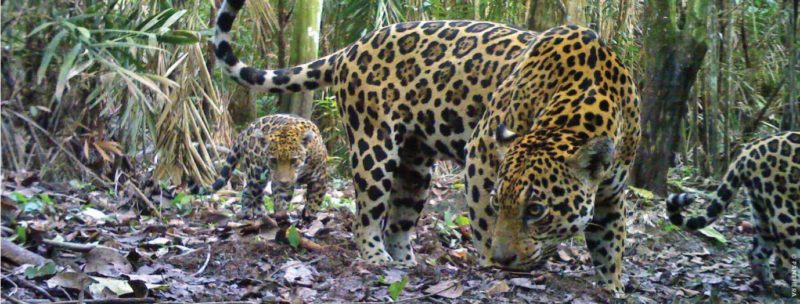
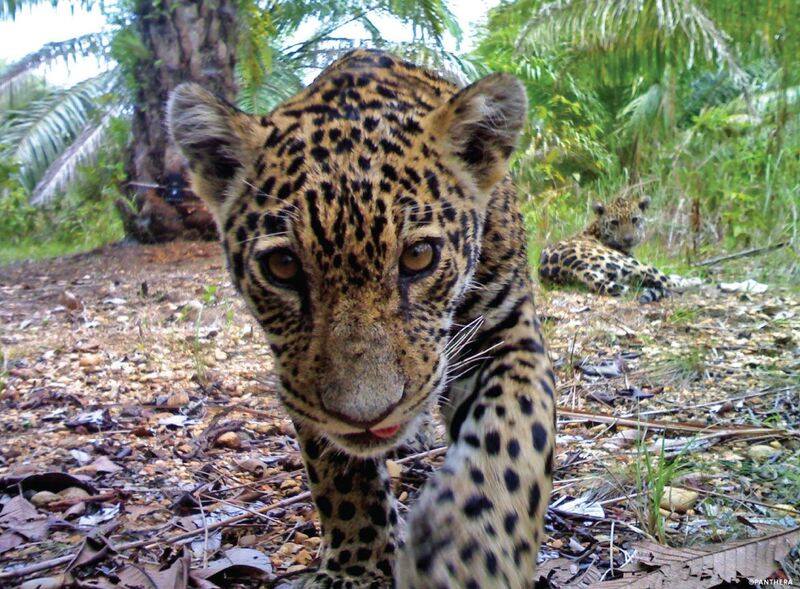
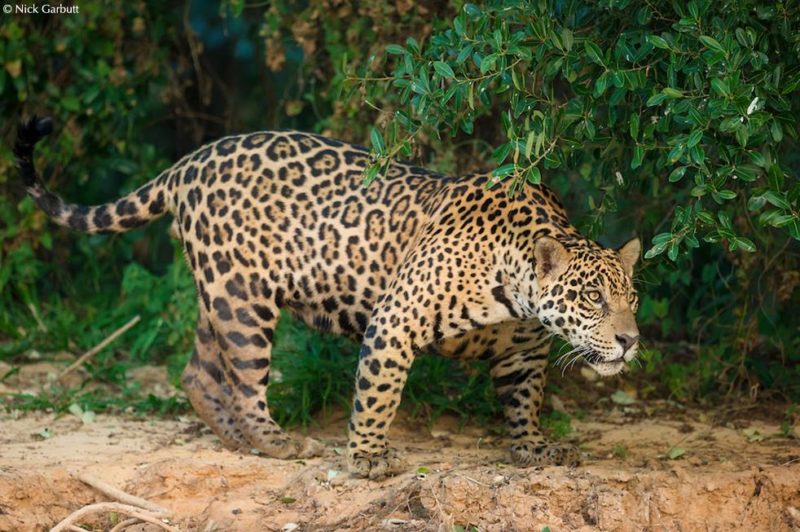
Big Life Foundation – Predator Compensation Fund
 In September 2017, Big Cat Rescue donated to the Big Life Foundation, an organization dedicated to, using innovative conservation strategies and collaborating closely with local communities, partner NGOs, national parks, and government agencies, to protect and sustain East Africa’s wildlife and wild lands.
In September 2017, Big Cat Rescue donated to the Big Life Foundation, an organization dedicated to, using innovative conservation strategies and collaborating closely with local communities, partner NGOs, national parks, and government agencies, to protect and sustain East Africa’s wildlife and wild lands.
The raising of livestock in Maasailand is a vital activity for the community’s subsistence. Predators are under constant threat from livestock owners who view them as a danger and kill them in retribution for livestock losses. Retaliatory killing is the major threat to Africa’s lion population today – the population is currently suffering a precipitous decline in numbers. Recent estimates show that, 20 years ago there were 200,000 lions in Africa and today there are less than 25,000 lions, with no more than 2,000 of these individuals residing in Kenya.
In 2003, in response to an imminent – and virtually certain – threat of local lion extinction, Maasailand Preservation Trust (MPT), in close collaboration with the local community, conceived a first-of-its-kind predator compensation Fund (PCF). The intention was to better balance the costs and benefits of living with wildlife and thereby replace conflict and retaliation with tolerance and cohabitation.
This novel conservation strategy remains one of the most far-reaching and effective projects yet conceived by MPT, the first project of its kind implemented in Maasailand.
One of many key aspects of the Predator Compensation Fund (PCF) is that it acts as an umbrella of protection – not only preventing lion extinction but also providing coverage for other persecuted species, such as hyena, cheetah, leopard, wild dog and jackal.
Since inception, lion killing has virtually stopped on Mbirikani Group Ranch within a Maasai community of 10,000 individuals. Only 6 lions were killed by livestock owners on Mbirikani Group Ranch during the first nine years of the project, while, during that same period, more than 200 lions were killed on the neighbouring group ranches where the PCF programme did not exist (at that time). The same Mbirikani Group Ranch community that now protects lions killed 22 in just 18 months prior to introduction of this innovative project. A key factor to PCF’s success is the requirement that the entire community must support the objectives of the programme or compensation will cease for everyone.
Big Cat Rescue donated $1000 to this project. Read more about the project here: https://biglife.org/predator-compensation
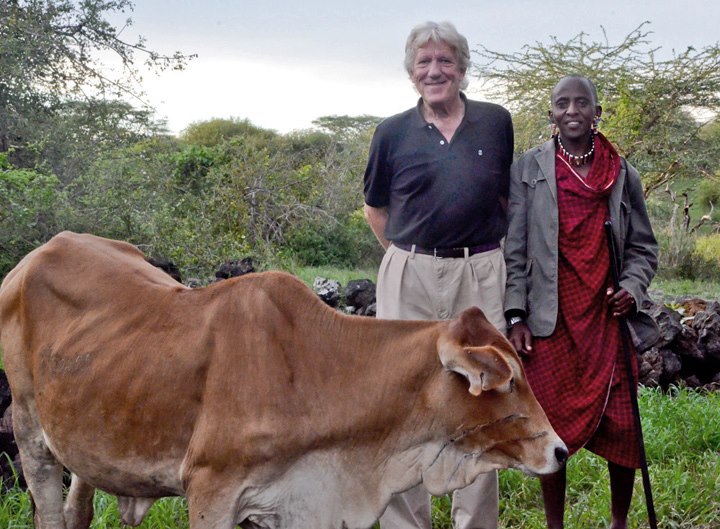
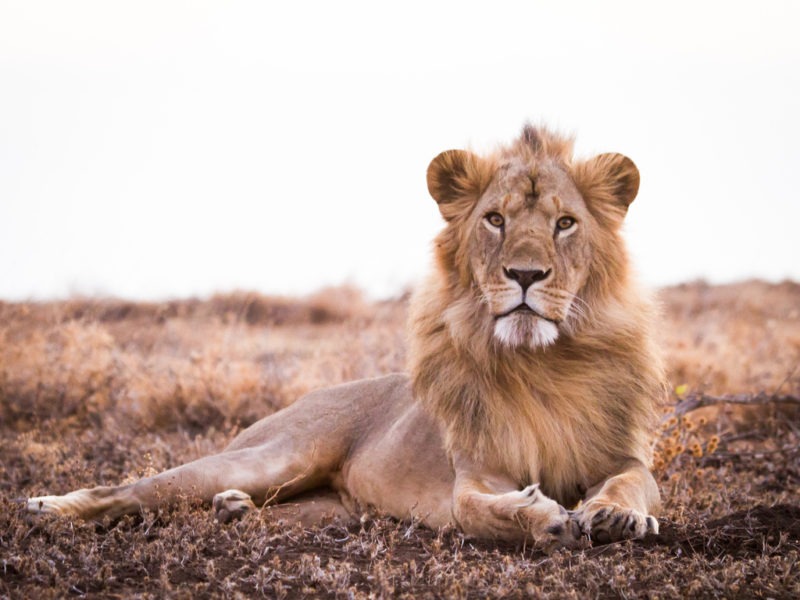
Wildcat Walkabout
On November 4th 2017 Big Cat Rescue had our annual Wildcat Walkabout event, where money raised by admission prices, was donated to 5 worthwhile big cat conservation projects. This year also celebrated our 25th anniversary. Each project was devoted to a different cat species; Tigers, Lions, Cougars, Bobcats and Ocelots. The event raised $13,630 total! Below are descriptions of each project and links to read more about the organizations we supported.
Tigers: Rescue, Rehabilitation and Release
 There are currently between 400- 500 Siberian tigers left in the wild. The problem of conflicts between big predators and humans is not new. It is very urgent and always attracts close attention both from the public and mass media. Every year wild tiger cubs lose their mothers and are orphaned as a result of this conflict, some are found injured or diseased and require temporary care. Previously these cubs would of been killed or died, but Primorskii Regional Non-commercial Organization (PRNCO), is the first full fledged rehabilitation center for tigers in Russia, focusing on successful treatment to regain their health, teach them to hunt and fear humans, and make their release possible and safe for both the animal and the people living in its habitat.
There are currently between 400- 500 Siberian tigers left in the wild. The problem of conflicts between big predators and humans is not new. It is very urgent and always attracts close attention both from the public and mass media. Every year wild tiger cubs lose their mothers and are orphaned as a result of this conflict, some are found injured or diseased and require temporary care. Previously these cubs would of been killed or died, but Primorskii Regional Non-commercial Organization (PRNCO), is the first full fledged rehabilitation center for tigers in Russia, focusing on successful treatment to regain their health, teach them to hunt and fear humans, and make their release possible and safe for both the animal and the people living in its habitat.
The rehabilitation facility is in a wooded location far from human settlements and allows the tigers to be semi-free ranging with limited to no disturbance from people. Since 2012, they have rehabilitated 7 tigers, 6 of which were released back into their natural habitat. 5 of them became fully adapted to life in the wild. The first female they released went on to have 2 cubs and 2 of the other tigers released separately, formed a couple and also reproduced in the wild, proving their rehabilitation and release programme successful. The population of the siberian tigers living exclusively in the south of the Russian far east has low numbers and very low genetic variety. The preservation of each healthy individual with the ability to reproduce, capable of living in nature independently is critical to conserve the species. A total of $2910 was donated to this project.
You can read more about the rehabilitation center and their work here: https://en.siberian-tiger.ru/
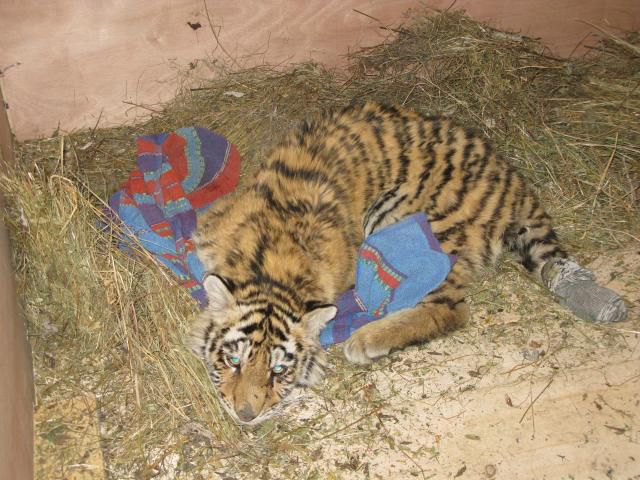
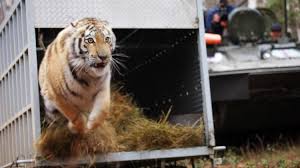

Lions: Targeting Poaching and Illegal Trafficking
 Working Dogs for Conservation is the world’s leading conservation detection dog organization. They are pioneers in using dogs’ extraordinary sense of smell to further conservation and aid in the fight against wildlife trafficking. To save wildlife, they first start by saving dogs, as many of their conservation detection dogs are rescued from shelters. For most of their history, WD4C have used dogs’ exceptional abilities to find where and how cryptic, rare, or threatened species live. They are now putting the dogs to work finding and eliminating threats to these species. During their work monitoring Lions in Zambia, WD4C saw the victims of poaching firsthand and knew their dogs could help.
Working Dogs for Conservation is the world’s leading conservation detection dog organization. They are pioneers in using dogs’ extraordinary sense of smell to further conservation and aid in the fight against wildlife trafficking. To save wildlife, they first start by saving dogs, as many of their conservation detection dogs are rescued from shelters. For most of their history, WD4C have used dogs’ exceptional abilities to find where and how cryptic, rare, or threatened species live. They are now putting the dogs to work finding and eliminating threats to these species. During their work monitoring Lions in Zambia, WD4C saw the victims of poaching firsthand and knew their dogs could help.
 The focus of the the work was wire snares that have become an epidemic throughout Africa. Snares are extremely inhumane killing devices. The noose slips across the animal’s body part or neck and tightens, causing the animal to be trapped. An animal can be snared anywhere on its body, depending on the animal’s movement when it encounters the snare, and at any height. For many animals this means a long and painful death. With the assistance of WD4C not only were the dogs able to find the snares but they were 25% more successful than human searchers. In addition having dogs search for them left rangers with the ability to remain vigilant in protecting the large carnivores.
The focus of the the work was wire snares that have become an epidemic throughout Africa. Snares are extremely inhumane killing devices. The noose slips across the animal’s body part or neck and tightens, causing the animal to be trapped. An animal can be snared anywhere on its body, depending on the animal’s movement when it encounters the snare, and at any height. For many animals this means a long and painful death. With the assistance of WD4C not only were the dogs able to find the snares but they were 25% more successful than human searchers. In addition having dogs search for them left rangers with the ability to remain vigilant in protecting the large carnivores.
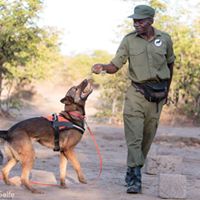 The dogs have since been trained to find guns, gunpowder and ammunition in addition to animal parts. Their success is helping wildlife authorities find wildlife products, confiscate weapons and arrest poachers which in turn has a significant impact on keeping protected areas for wildlife safe. To keep African wildlife products from being trafficked around the world, WD4C are currently placing conservation detection dogs with customs agents in Vietnam, Malawi, Kyrgyzstan, Tajikistan, Cambodia, and the United States. A total of $2887 was donated to this project.
The dogs have since been trained to find guns, gunpowder and ammunition in addition to animal parts. Their success is helping wildlife authorities find wildlife products, confiscate weapons and arrest poachers which in turn has a significant impact on keeping protected areas for wildlife safe. To keep African wildlife products from being trafficked around the world, WD4C are currently placing conservation detection dogs with customs agents in Vietnam, Malawi, Kyrgyzstan, Tajikistan, Cambodia, and the United States. A total of $2887 was donated to this project.
Read more about the work done by WD4C here: https://wd4c.org/poachingtrafficking.html
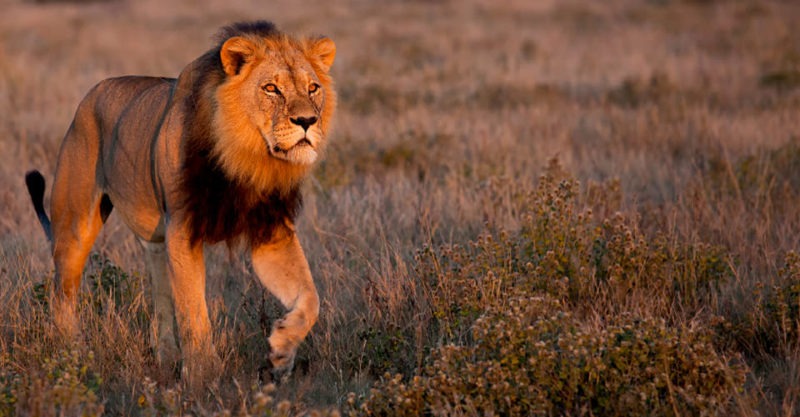
Ocelots: In Trinidad
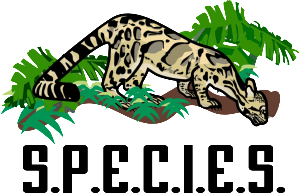 The Ocelot is one of 13 species of wild cat native to the western hemisphere and one of 10 felids inhabiting Latin America. The Ocelot occurs from the lower Rio Grande Valley to extreme south Texas and the Sky Islands of southern Arizona. S.P.E.C.I.E.S is undertaking the first comprehensive effort to study ocelots in Trinidad. The history of the ocelot on Trinidad is unique for several reasons. It is the only place that the ocelot has evolved in the absence of larger mammalian carnivores. On Trinidad it is the largest predatory mammal. Among Neotropical small felids, it is second only to the jaguarundi in distribution expanse, and is classified by the IUCN as a species of “Least Concern”, the lowest priority for conservation among the world’s threatened and endangered species. But on Trinidad, there is anecdotal evidence to suggest the ocelot population may be declining, and its future may be threatened by human activities. More importantly perhaps, Trinidad hosts the only population of ocelots on a continental island, making it the most geographically isolated of all ocelot populations.
The Ocelot is one of 13 species of wild cat native to the western hemisphere and one of 10 felids inhabiting Latin America. The Ocelot occurs from the lower Rio Grande Valley to extreme south Texas and the Sky Islands of southern Arizona. S.P.E.C.I.E.S is undertaking the first comprehensive effort to study ocelots in Trinidad. The history of the ocelot on Trinidad is unique for several reasons. It is the only place that the ocelot has evolved in the absence of larger mammalian carnivores. On Trinidad it is the largest predatory mammal. Among Neotropical small felids, it is second only to the jaguarundi in distribution expanse, and is classified by the IUCN as a species of “Least Concern”, the lowest priority for conservation among the world’s threatened and endangered species. But on Trinidad, there is anecdotal evidence to suggest the ocelot population may be declining, and its future may be threatened by human activities. More importantly perhaps, Trinidad hosts the only population of ocelots on a continental island, making it the most geographically isolated of all ocelot populations.
Because  Trinidad has been isolated from the mainland for approximately 11,000 years, much of its biodiversity is unique. Isolated from mainland South American species, many vertebrates and invertebrates on the island are genetically distinct enough to be different species or subspecies.
Trinidad has been isolated from the mainland for approximately 11,000 years, much of its biodiversity is unique. Isolated from mainland South American species, many vertebrates and invertebrates on the island are genetically distinct enough to be different species or subspecies.
 This study aims to look at the ecology of Trinidad’s ocelot population, define its place in the evolutionary history of the ocelot as a species and develop an integrative plan for its long-term conservation. The study will investigate the impacts of deforestation, illegal hunting, urbanization, and different types of agricultural land use and intensity on ocelot habitat suitability, population density, and the diversity of prey species available to the predator. S.P.E.C.I.E.S are also collaborating with local institutions to promote greater awareness of the ocelot’s needs among the public of Trinidad & Tobago, build individual capacity and organizational capacity to monitor ocelots, and develop an island strategy for habitat connectivity and conservation based on the needs of the species. If the ecological needs of ocelots can be better understood, it is possible to more precisely define the types and intensity of human activities that are compatible with an increasing or stable ocelot population. A total of $2541 was donated to this project.
This study aims to look at the ecology of Trinidad’s ocelot population, define its place in the evolutionary history of the ocelot as a species and develop an integrative plan for its long-term conservation. The study will investigate the impacts of deforestation, illegal hunting, urbanization, and different types of agricultural land use and intensity on ocelot habitat suitability, population density, and the diversity of prey species available to the predator. S.P.E.C.I.E.S are also collaborating with local institutions to promote greater awareness of the ocelot’s needs among the public of Trinidad & Tobago, build individual capacity and organizational capacity to monitor ocelots, and develop an island strategy for habitat connectivity and conservation based on the needs of the species. If the ecological needs of ocelots can be better understood, it is possible to more precisely define the types and intensity of human activities that are compatible with an increasing or stable ocelot population. A total of $2541 was donated to this project.
Read more about the work done by S.P.E.C.I.E.S here: https://carnivores.org/
Cougars: Conservation and Advocacy
 The Mountain Lion Foundation is a national nonprofit organization dedicated to protecting Cougars and their habitats. The Foundation works closely with legislative, governmental and conservation groups to heighten public awareness and educate policy makers on conservation issues such as hunting, habitat loss, workable wildlife corridors, harmonious human/mountain lion interactions, and the vital role of the mountain lion in a healthy ecosystem.
The Mountain Lion Foundation is a national nonprofit organization dedicated to protecting Cougars and their habitats. The Foundation works closely with legislative, governmental and conservation groups to heighten public awareness and educate policy makers on conservation issues such as hunting, habitat loss, workable wildlife corridors, harmonious human/mountain lion interactions, and the vital role of the mountain lion in a healthy ecosystem. 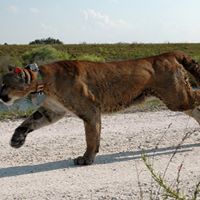 MFL works to continue growing knowledge about the species, ecology, habitat use and threats and uses it in an effort to influence cougar management plans, laws and regulations.
MFL works to continue growing knowledge about the species, ecology, habitat use and threats and uses it in an effort to influence cougar management plans, laws and regulations.
 One of many important specific initiatives headed by the Mountain Lion Foundation, is Secure Livestock Enclosures. In the United States more cougars are killed as a result of preying on domestic livestock than for any other intentional reason. The Mountain Lion foundation provides vital assistance and guidelines for locals who want to protect their livestock, by giving them free construction plans, instructions and material lists for cougar proof enclosures, they also provide hand on assistance in their construction. By decreasing livestock, it decreases the human-cougar conflict and thus decreases the number of retaliatory killings. A total of $2538 was donated to this project.
One of many important specific initiatives headed by the Mountain Lion Foundation, is Secure Livestock Enclosures. In the United States more cougars are killed as a result of preying on domestic livestock than for any other intentional reason. The Mountain Lion foundation provides vital assistance and guidelines for locals who want to protect their livestock, by giving them free construction plans, instructions and material lists for cougar proof enclosures, they also provide hand on assistance in their construction. By decreasing livestock, it decreases the human-cougar conflict and thus decreases the number of retaliatory killings. A total of $2538 was donated to this project.
Read more about their work here: https://mountainlion.org/index.asp

Bobcats: Bay Area Study
 Bobcats, like many wild cat species, face a large number of threats in the wild, including habitat loss, habitat fragmentation due to human development, disease, poisoning and are still trapped and hunted for their fur throughout most of their range. In western states killing of bobcats is unlimited, and pelts from bobcats in these states are most prized because the region’s high elevations and cold temperatures make their spotted fur softer. Populations of bobcats sustain the ecological balance of both meso-predator and prey populations, yet continued growth of human population and road networks have increased mortality rates and genetically isolated bobcat populations.
Bobcats, like many wild cat species, face a large number of threats in the wild, including habitat loss, habitat fragmentation due to human development, disease, poisoning and are still trapped and hunted for their fur throughout most of their range. In western states killing of bobcats is unlimited, and pelts from bobcats in these states are most prized because the region’s high elevations and cold temperatures make their spotted fur softer. Populations of bobcats sustain the ecological balance of both meso-predator and prey populations, yet continued growth of human population and road networks have increased mortality rates and genetically isolated bobcat populations.
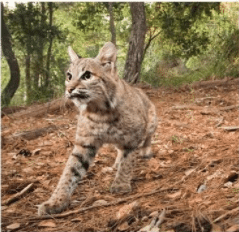 In Southern California, Felidae Conservation Fund is working in the Bay Area and Central Coast, trying to identify remaining bobcat habitat and wildlife linkages between habitats, in an effort to conserve wild Bobcat populations and prevent local extinctions. Identifying linkages that connect habitats is critical as they provide a means for species to access necessary resources, provide access for juvenile dispersal and facilitate movement between habitat patches for wildlife to find viable mates. Since carnivores generally have relatively large home ranges, fragmented habitats often become smaller than the home ranges. As a result, home ranges of large carnivores often extend into the boundaries of urbanized areas which leads to human-wildlife conflicts.
In Southern California, Felidae Conservation Fund is working in the Bay Area and Central Coast, trying to identify remaining bobcat habitat and wildlife linkages between habitats, in an effort to conserve wild Bobcat populations and prevent local extinctions. Identifying linkages that connect habitats is critical as they provide a means for species to access necessary resources, provide access for juvenile dispersal and facilitate movement between habitat patches for wildlife to find viable mates. Since carnivores generally have relatively large home ranges, fragmented habitats often become smaller than the home ranges. As a result, home ranges of large carnivores often extend into the boundaries of urbanized areas which leads to human-wildlife conflicts.
The Bay Area Bobcat Study aims to look at how human development and habitat fragmentation affects bobcat populations, population status, mortality factors, and health, all of which have not been evaluated in depth for the region. This study will track bobcat movement through fragmented landscapes and identify barriers that hinder juvenile dispersal within bobcat metapopulations. Combining telemetry and conducting field camera research will reveal where bobcat juveniles are dispersing, and how bobcats are moving on the landscape. By gaining this information felidae will be able to make plans for conservation including informed recommendations to land managers and roadway engineers, concerning wildlife corridors and crossing structures. A total of $2754 was donated to this project.
You can read more about the project here: https://www.felidaefund.org/?q=bay-area-bobcats-page
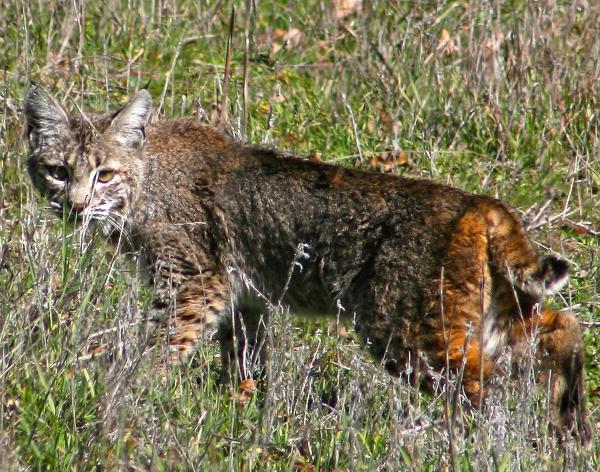

S.P.E.C.I.E.S
 Big Cat Rescue donated $2,500, in June 2017, to assist with the first surveys of African Golden Cat in Cameroon. The study is being conducted by Dr Anthony Giordano, his non profit organization S.P.E.C.I.E.S and UCLA’s Center for Tropical Research. African Golden Cats are endemic to rainforests of west and central Africa. They are a close relative of the Caracal and African Serval and currently listed on the IUCN realist as vulnerable. Due to its reclusive tendencies little is currently known about the ecology or behavior of this species.
Big Cat Rescue donated $2,500, in June 2017, to assist with the first surveys of African Golden Cat in Cameroon. The study is being conducted by Dr Anthony Giordano, his non profit organization S.P.E.C.I.E.S and UCLA’s Center for Tropical Research. African Golden Cats are endemic to rainforests of west and central Africa. They are a close relative of the Caracal and African Serval and currently listed on the IUCN realist as vulnerable. Due to its reclusive tendencies little is currently known about the ecology or behavior of this species.
The African golden cat (Caracal aurata) is subject to superstition by tribal people in southern Cameroon. Pygmy tribes carry golden cat tails with them on hunts as a lucky token and their skin is used in circumcision rituals. Hunting for the golden cat is banned across 12 of its range countries, with Cameroon being an exception. In Cameroon conservation is generally not viewed as a good thing by local people, People who live and depend upon the forest, either for food or income, often see little or no value in conservation thus changing local perceptions is a key part of the project. This project will provide much needed information on African golden Cat distribution and population size, but also work closely with local communities and authorities to ensure better protection.
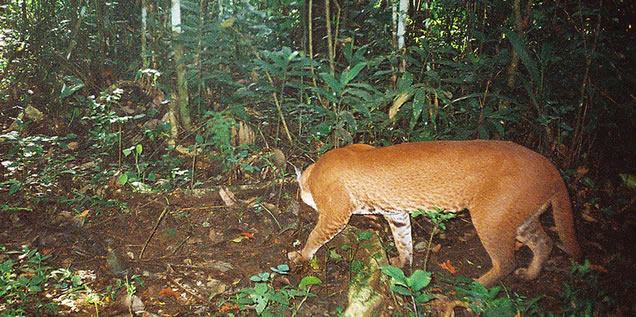 A pilot camera-trap study has already been completed in Dja Faunal Reserve and a second proposed site of Lokebe National Park along the border with Gabon, has been set and looks promising. The project aims to raise around $12,000 in the coming months to fund the second site study.
A pilot camera-trap study has already been completed in Dja Faunal Reserve and a second proposed site of Lokebe National Park along the border with Gabon, has been set and looks promising. The project aims to raise around $12,000 in the coming months to fund the second site study.
Read more about S.P.E.C.I.E.S and the projects they are currently undertaking here: https://carnivores.org, https://carnivores.org/poached- trafficked-saving-cameroons-af rican-golden-cats-pangolins/
JAGUARUNDI IN ARGENTINA
The Jaguarundi is considered a generalist predator and occupies a broad spectrum of low-altitude habitats. The scarcity of information on Jaguarundis is a reason of concern, and a recent review of the available data suggests that frequently its population densities may be lower than traditionally believed. The number of studies on Jaguarundi ecology is limited and even some basic aspects of its biology are still little known. In particular, although the available information suggest that this cat is able to adapt to fragmented and altered landscapes, it is unclear how habitat loss and fragmentation affect Jaguarundis. Thus further studies are essential to clarify its conservation. Big Cat Rescue donated to such a study in June, a partnership between Felidae Conservation Fund and S.P.E.C.I.E.S.
 The project aims to start filling the gap in knowledge of the Jaguarundi, specifically in Argentina. Although little information is available on the felid communities of Argentina, in some regions jaguarundis appear to be relatively abundant. Based on that information, this study focuses on two regions; Dry Chaco and the Lowland Yungas. Both ecoregions have been heavily modified by anthropogenic activities in the last decades, but in some areas they may still harbor a great diversity of small cat species, including jaguarundis.
The project aims to start filling the gap in knowledge of the Jaguarundi, specifically in Argentina. Although little information is available on the felid communities of Argentina, in some regions jaguarundis appear to be relatively abundant. Based on that information, this study focuses on two regions; Dry Chaco and the Lowland Yungas. Both ecoregions have been heavily modified by anthropogenic activities in the last decades, but in some areas they may still harbor a great diversity of small cat species, including jaguarundis.
Although the long-term goal of this project is to carry out a comprehensive conservation biology study of the jaguarundi, The initial objectives are:
1. Identify a promising study site for the long-term study of jaguarundis and its interactions
with the other members of the carnivore guild.
2. Produce novel information on habitat use and activity patterns of the carnivore guild of two little studied areas across a gradient of anthropogenic alteration of natural habitats.
3. Study the overlap in habitat association and activity patterns between these carnivores.
4. Provide training opportunities on carnivore field study for graduate students.
AFRICAN PEOPLE AND WILDLIFE – NORTHERN TANZANIA INITIATIVE
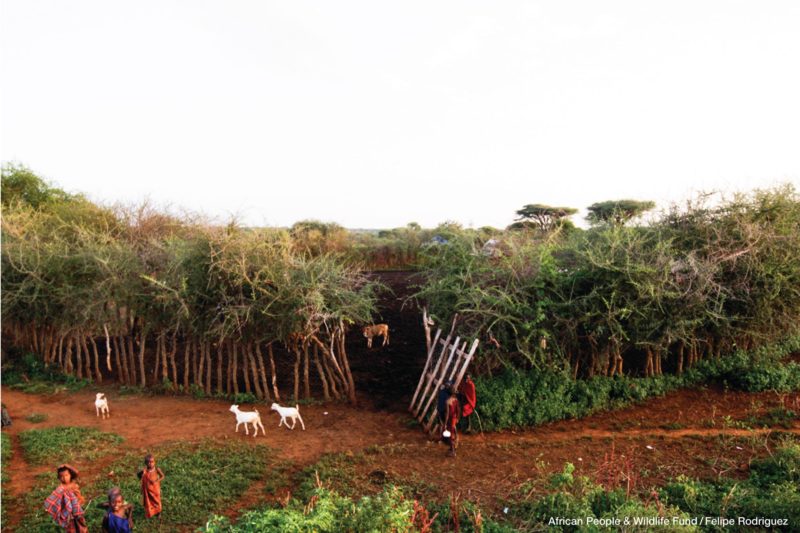
In July 2017, Big Cat Rescue donated funds to assist the African People & Wildlife.
Northern Tanzania includes 30,000 square kilometers of grassland, Acacia woodland and Commiphora bushland. Cat species residing here include the most threatened population of African lions, as well as leopards, cheetah and caracals. Despite its size, this area holds only two protected areas, Tarangire National Park, and Lake Manyara National Park. Every week lions and other predators are being killed as they are forced to share their habitat with an increasing human population.
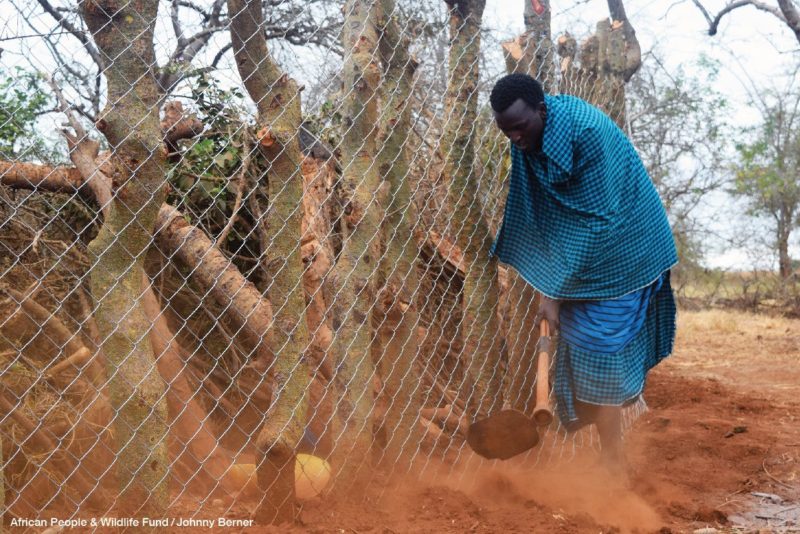 In this semi-arid landscape, the pastoralist Maasai people depend upon the availability of water and food for themselves and for the livestock herds that form their economic foundation. Patterns of seasonal rain create a constant movement of prey species in and out of those parks meaning lions and other predators rely on the community land outside of these parks for their survival.
In this semi-arid landscape, the pastoralist Maasai people depend upon the availability of water and food for themselves and for the livestock herds that form their economic foundation. Patterns of seasonal rain create a constant movement of prey species in and out of those parks meaning lions and other predators rely on the community land outside of these parks for their survival.
For those born and raised in Tanzania, these predators are a threat to valuable livestock, particularly when livestock are left in vulnerable situations. When livestock are killed by wildlife, the herders retaliate, most often by chasing and killing the lions they find.
The programme set in place by the African People & Wildlife focuses on ensuring that wildlife have the habitat and food resources they need to flourish alongside growing human populations.
 Living Walls: Unique, culturally appropriate and environmentally-friendly enclosures protect livestock from lions, keep lions out of the way of Maasai spears and contribute to habitat protection. The fence posts are made from native Commiphora limbs, that when planted will take root and flourish, so never need to be replaced. A Chain link barrier resists all predators- Commiphora grows in height and density, further deterring predators by providing a visual and physical barrier- Requires no upkeep throughout the year. Living Walls prevent nighttime raids of predators with a 99.9% success rate. When livestock are protected, human-wildlife conflict is reduced. To date, no lions have been killed at corrals fortified with Living Walls.
Living Walls: Unique, culturally appropriate and environmentally-friendly enclosures protect livestock from lions, keep lions out of the way of Maasai spears and contribute to habitat protection. The fence posts are made from native Commiphora limbs, that when planted will take root and flourish, so never need to be replaced. A Chain link barrier resists all predators- Commiphora grows in height and density, further deterring predators by providing a visual and physical barrier- Requires no upkeep throughout the year. Living Walls prevent nighttime raids of predators with a 99.9% success rate. When livestock are protected, human-wildlife conflict is reduced. To date, no lions have been killed at corrals fortified with Living Walls.
Warriors for Wildlife: Warriors for Wildlife are local community members, facilitated by the African People & Wildlife, who assist in our efforts around wildlife monitoring, big cat conflict prevention and enforcement of wildlife laws. The Warriors for Wildlife team includes 42 Big Cat Conflict officers who work to save the lives of livestock via rapid response in 20 communities, and 7 highly-trained Community Scouts who are deployed to combat poaching and other illegal activities. For Wildlife monitoring Program officers, assisted by community members, monitor the health of wildlife populations to measure program impacts.
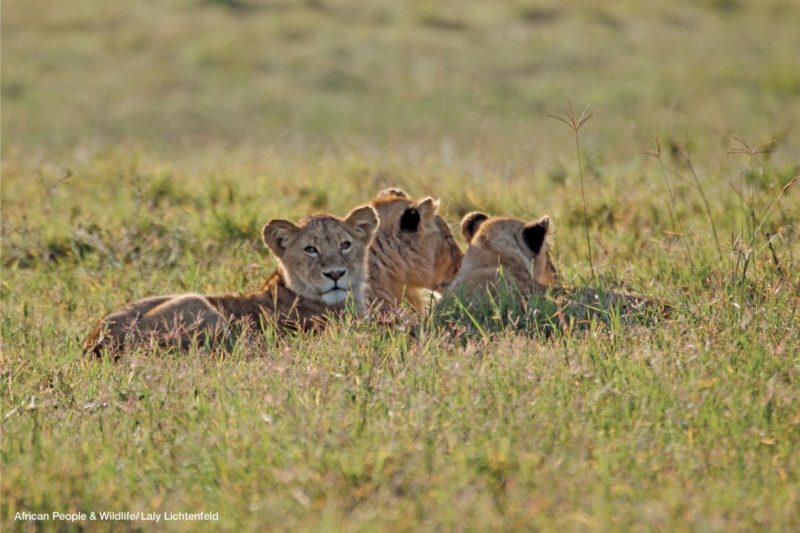
Read more about the great work done by the African People & Wildlife here: africanpeoplewildlife.org
INTERNATIONAL TIGER DAY 2017
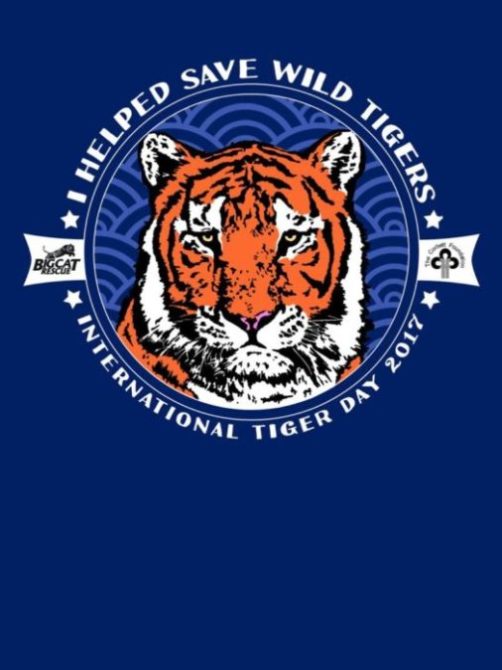 For International Tiger Day 2017, a Fundraiser was held to raise money and continue our support of The Corbett Foundation and their open wells initiative. The Corbett Foundation is a charitable, non-profit and non-governmental organization solely committed to the conservation of wildlife. They work towards a harmonious coexistence between human beings and wildlife across some of the most important wildlife habitats in India, namely Corbett Tiger Reserve, Kanha and Bandhavgarh Tiger Reserves, Kaziranga Tiger Reserve and around the Greater Rann of Kutch. Local Communities and wildlife share natural ecosystems and this often raises conflict, so the health and wellbeing of these communities are often directly linked to their willingness to participate in wildlife conservation efforts. The Corbett foundation has implemented its programs in over 400 villages in the last decade.
For International Tiger Day 2017, a Fundraiser was held to raise money and continue our support of The Corbett Foundation and their open wells initiative. The Corbett Foundation is a charitable, non-profit and non-governmental organization solely committed to the conservation of wildlife. They work towards a harmonious coexistence between human beings and wildlife across some of the most important wildlife habitats in India, namely Corbett Tiger Reserve, Kanha and Bandhavgarh Tiger Reserves, Kaziranga Tiger Reserve and around the Greater Rann of Kutch. Local Communities and wildlife share natural ecosystems and this often raises conflict, so the health and wellbeing of these communities are often directly linked to their willingness to participate in wildlife conservation efforts. The Corbett foundation has implemented its programs in over 400 villages in the last decade.
Big Cat Rescue matched the profit from purchases of our International Tiger Day merchandise – and any donations made on the merchandise page, dollar for dollar up to $5000 and donated it to the Corbett Foundation’s in situ work to protect wild tigers, leopards and other animals in India from falling into open farm wells. One specific area the Corbett foundation is working on is the Bandhavgarh Tiger Reserve. Open farm wells, dug by villagers, in the buffer zone of the Reserve, are proving to be a deathtrap for wild animals, with several cases having been reported of animals, including tigers and leopards, drowning by accidentally falling into the open wells. Currently around 2500 of these open farm wells exist, many in the core zone of the Tiger Reserve. The Corbett Foundation, has initiated a project to install chain-link fencing around such open farm wells to prevent any further accidental drowning. In the first phase of the project, 200 fences have already been built around wells closest to the core of the reserve.
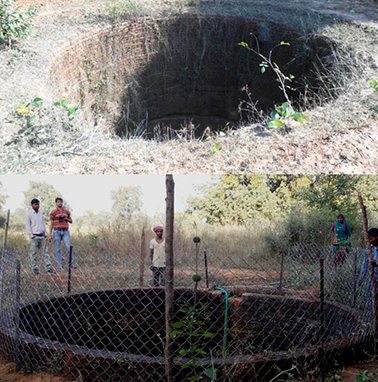 In March 2016, Big Cat Rescue donated $5,000 to assist with this initiative and from this fundraiser we were able to donate a further $17,240. The cost to fence one well is between $90-$100, meaning from our donations around 200 wells will be successfully fenced.
In March 2016, Big Cat Rescue donated $5,000 to assist with this initiative and from this fundraiser we were able to donate a further $17,240. The cost to fence one well is between $90-$100, meaning from our donations around 200 wells will be successfully fenced.
 Read more about the Corbett Foundation here: www.corbettfoundation.org
Read more about the Corbett Foundation here: www.corbettfoundation.org
Wildlife SOS India
 In May 2017, Big Cat Rescue donated to Wildlife SOS India, an organization established in 1995 by a small group of individuals inspired to start a movement and make lasting change to protect and conserve India’s natural heritage, forest and wildlife. Today, the organization has evolved to actively work towards protecting Indian wildlife, conserving habitat, studying biodiversity, conducting research and creating alternative and sustainable livelihoods for erstwhile poacher communities or those communities that depend on wildlife for sustenance. India’s wildlife is under severe threat – every animal from the majestic elephant and the tiger, to the shy sloth bear and rare pangolins have fast become “the hunted”. While time is running out for these creatures, it’s not too late to help. Wildlife SOS consistently makes a difference to give back to the planet, to give back to nature and help protect the environment and wildlife.
In May 2017, Big Cat Rescue donated to Wildlife SOS India, an organization established in 1995 by a small group of individuals inspired to start a movement and make lasting change to protect and conserve India’s natural heritage, forest and wildlife. Today, the organization has evolved to actively work towards protecting Indian wildlife, conserving habitat, studying biodiversity, conducting research and creating alternative and sustainable livelihoods for erstwhile poacher communities or those communities that depend on wildlife for sustenance. India’s wildlife is under severe threat – every animal from the majestic elephant and the tiger, to the shy sloth bear and rare pangolins have fast become “the hunted”. While time is running out for these creatures, it’s not too late to help. Wildlife SOS consistently makes a difference to give back to the planet, to give back to nature and help protect the environment and wildlife.
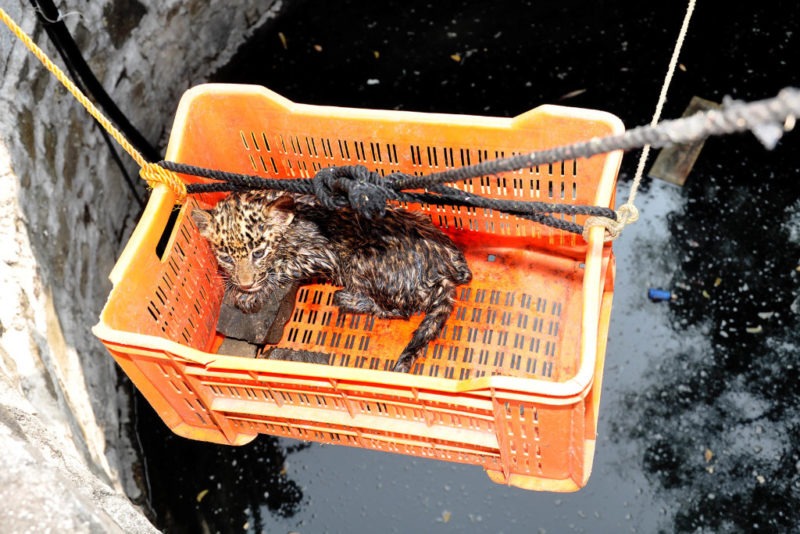
The areas surrounding Maharashtra India, consisting of scrub jungle abundant with small prey, have provided ideal habitat to leopards. However this habitat has began being destroyed by development, and what was once a leopard haven, has now drastically changed since the Government began to provide financial incentives to encourage sugar cane cultivation in these areas. Rapid deforestation was the consequence of creating sugar cane fields, leaving the leopards with little option but to adapt to the changing landscape. With a shrinking forested habitat remaining for foraging, hiding and to live in, the leopards were forced to move to into the sugar cane fields.
 Female leopards have begun to give birth in the tall sugar cane crops. The height of the plants provides the most suitable cover for a mother to conceal and protect her cubs from predators. Sadly, cub season coincides with the sugar cane harvesting season and protective mother leopards will attack if people come near their young. Naturally this causes public anxiety and a tense man-animal conflict situation. Worried villagers call for the Forest Department to trap and remove the leopards even if no dangerous incidents have occurred. Historically, some of these captured Leopards were released back into the wild and others, particularly those with a history of attacking people, were left in solitary confinement mostly in cages the size of small dining tables, for the rest of their lives. Public resistance to re-release, put pressure on government offices with few resources, to explore more humane options for the cats.
Female leopards have begun to give birth in the tall sugar cane crops. The height of the plants provides the most suitable cover for a mother to conceal and protect her cubs from predators. Sadly, cub season coincides with the sugar cane harvesting season and protective mother leopards will attack if people come near their young. Naturally this causes public anxiety and a tense man-animal conflict situation. Worried villagers call for the Forest Department to trap and remove the leopards even if no dangerous incidents have occurred. Historically, some of these captured Leopards were released back into the wild and others, particularly those with a history of attacking people, were left in solitary confinement mostly in cages the size of small dining tables, for the rest of their lives. Public resistance to re-release, put pressure on government offices with few resources, to explore more humane options for the cats.
In 2007, Wildlife SOS partnered with the government to expand an already existing Leopard Rescue Center to address the emotional and logistical needs of India’s Leopards. The Manekdoh Leopard Rescue Centre run by Wildlife SOS in collaboration with the Maharashtra Forest Department houses 31 leopards and provides a transit home for leopards injured by villagers or trapped in conflict situations. The centre also houses several orphaned leopard cubs who cannot be released back into the wild as they are severely imprinted.
Wildlife SOS also reaches out to local communities to increase understanding about Leopards. The goal is to help people co-exist with leopards by increasing tolerance, and diminishing fears that have manifested due to ignorance and misconceptions about the cats.
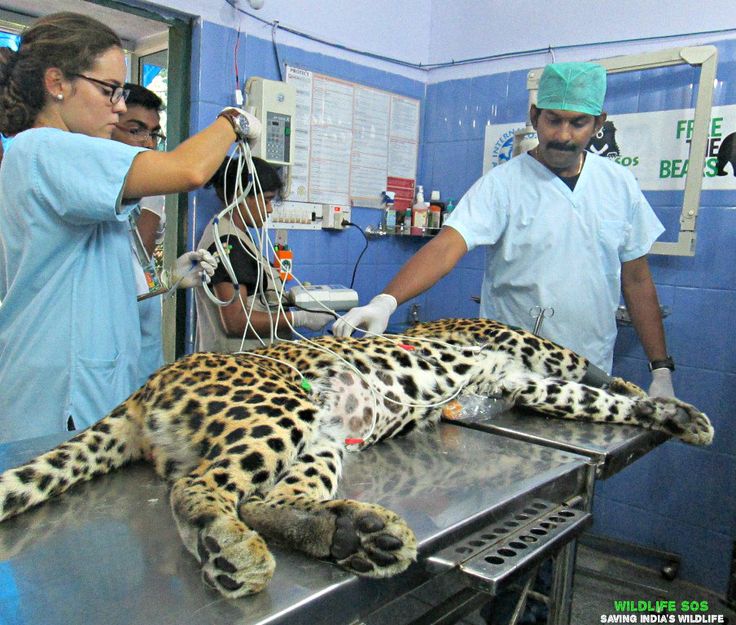
Wildlife SOS has vets that have been conducting awareness sessions in schools, colleges, forums for environment awareness with the objective of educating people about leopards and their behaviour leading to better understanding and tolerance and reducing incidence of conflict situations.
Read more about their work here: https://wildlifesos.org
Wildlife Trust of India
 In March 2017 Big Cat Rescue donated to the Wildlife Trust of India to aid in a project helping Tigers, Leopards and a host of other species. India’s amazing biodiversity has long faced threats from poachers using simple yet horribly effective hunting devices; traps & snares. A simple instrument consisting of an anchored wire with a sliding noose, a snare, is camouflaged with vegetation and set up on animal trails. These trails are not often accessible to people, and sometimes the animals routes are artificially narrowed to ensure they are led straight into the snare.
In March 2017 Big Cat Rescue donated to the Wildlife Trust of India to aid in a project helping Tigers, Leopards and a host of other species. India’s amazing biodiversity has long faced threats from poachers using simple yet horribly effective hunting devices; traps & snares. A simple instrument consisting of an anchored wire with a sliding noose, a snare, is camouflaged with vegetation and set up on animal trails. These trails are not often accessible to people, and sometimes the animals routes are artificially narrowed to ensure they are led straight into the snare.
Snares are extremely inhumane killing devices. The noose slips across the animal’s body part or neck and tightens, causing the animal to be trapped. An animal can be snared anywhere on its body, depending on the animal’s movement when it encounters the snare, and at any height. For many animals this means a long and painful death. On occasions jaw traps are also set.
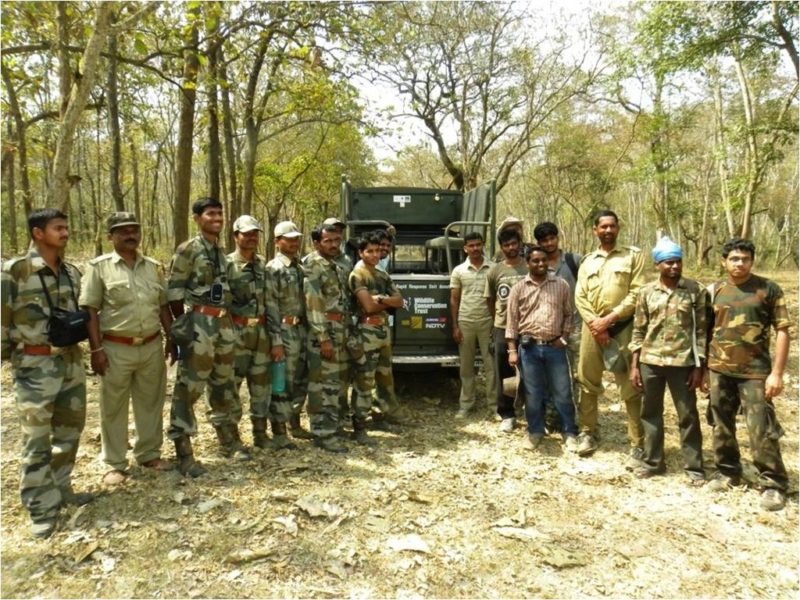
Protected areas have a buffer zone around it intended to be an area defining the boundaries of human habitation. This area has frequent wild animal movement and poachers lay wire snares along animal trails. It is a confirmed fact that Bandipur Tiger Reserve in Karnataka has lost 3 tigers, 2 leopards and 1 elephant to snares in the last 2 years and this in just one of India’s 100+ protected areas.
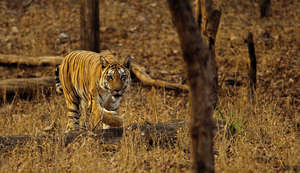 This project aims to eradicate the menace of snares and traps from the forests, with twin goals of, removing existing snares and dissuading further snaring through regular de-snaring walks and an active intelligence network to zero in on individual poachers. The team walks an 8 km route following animal trails scanning them for signs of snares. Snares & traps located are tagged with the geolocation before handing over to the State Forest Dept. Plotting the geolocation points on a map helps to identify snaring hotspots and appropriate follow up is then initiated.
This project aims to eradicate the menace of snares and traps from the forests, with twin goals of, removing existing snares and dissuading further snaring through regular de-snaring walks and an active intelligence network to zero in on individual poachers. The team walks an 8 km route following animal trails scanning them for signs of snares. Snares & traps located are tagged with the geolocation before handing over to the State Forest Dept. Plotting the geolocation points on a map helps to identify snaring hotspots and appropriate follow up is then initiated.
Read more about Wildlife Trust of India here: https://www.wti.org.in
Tanzania Lion Illumination Project
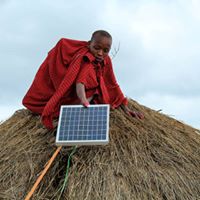 In April 2017 Big Cat Rescue continued our support of the Tanzania Lion Illumination Project. The Tanzania Lion Illumination Project is a small, non-profit organization that works out in Tanzania installing “Lion Lights” on to livestock Bomas in areas where they are needed, to help rural communities protect their livestock and reduce retaliatory killings. “Lion lights” are a simple and effective method that involved the installation of LED lights around the tops of livestock bomas.
In April 2017 Big Cat Rescue continued our support of the Tanzania Lion Illumination Project. The Tanzania Lion Illumination Project is a small, non-profit organization that works out in Tanzania installing “Lion Lights” on to livestock Bomas in areas where they are needed, to help rural communities protect their livestock and reduce retaliatory killings. “Lion lights” are a simple and effective method that involved the installation of LED lights around the tops of livestock bomas.
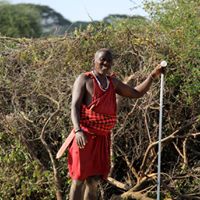 The flashing LED lights are solar powered and help to repel predators, by disorientating them and causing them to flee. To date the Tanzania Lion Illumination Project has installed lights on more than 70 Bomas and the result has shown a dramatic decrease in both livestock loss and retaliatory predator killings.
The flashing LED lights are solar powered and help to repel predators, by disorientating them and causing them to flee. To date the Tanzania Lion Illumination Project has installed lights on more than 70 Bomas and the result has shown a dramatic decrease in both livestock loss and retaliatory predator killings.
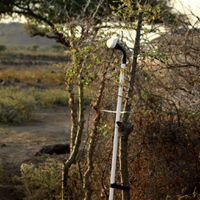 We donated a total of $6,000 to purchase, ship and install over 800 lights to Bomas in need. After our initial donation in 2016, we received feedback that the lights had a 100% success rate and the demand for lights was huge….we were more then happy to help!
We donated a total of $6,000 to purchase, ship and install over 800 lights to Bomas in need. After our initial donation in 2016, we received feedback that the lights had a 100% success rate and the demand for lights was huge….we were more then happy to help!
Sand Cats in Morocco
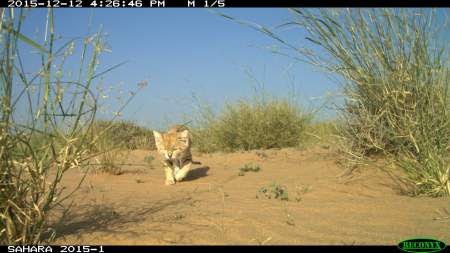 In 2017 Big Cat Rescue continued our support of the first ever study on the ecology and behavior of Sand cats in Morocco, launched in 2015 by Dr Alex Sliwa and Gregory Breton, scientists from Europe. The $2,000 we donated will pay for 4 weekly trips by trained local people to track the radio-collared sand cats. This is of the utmost importance right now, and added a month’s worth of tracking data accumulation to the study.
In 2017 Big Cat Rescue continued our support of the first ever study on the ecology and behavior of Sand cats in Morocco, launched in 2015 by Dr Alex Sliwa and Gregory Breton, scientists from Europe. The $2,000 we donated will pay for 4 weekly trips by trained local people to track the radio-collared sand cats. This is of the utmost importance right now, and added a month’s worth of tracking data accumulation to the study.
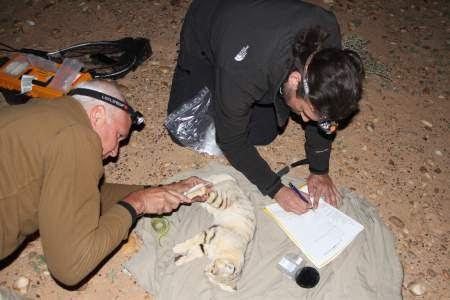 The researchers aimed to study the cats over several years to collect data, throughout the lives of individuals but also across generations. In an attempt to understand the species better the research aims to look at particular ecological aspects such as activity times, size of home range, territory, social and reproductive behaviors, prey species and different hunting methods. The method of the study is for researchers to actively search for Sand Cats. Once located, the animal are caught and sedated, to be measured and given a health check, then fitted with a radio collar. These animals will then be followed with an receiver and antenna to determine their movements.
The researchers aimed to study the cats over several years to collect data, throughout the lives of individuals but also across generations. In an attempt to understand the species better the research aims to look at particular ecological aspects such as activity times, size of home range, territory, social and reproductive behaviors, prey species and different hunting methods. The method of the study is for researchers to actively search for Sand Cats. Once located, the animal are caught and sedated, to be measured and given a health check, then fitted with a radio collar. These animals will then be followed with an receiver and antenna to determine their movements.
The Nature Conservancy Florida
The Nature Conservancy Florida and Big Cat Rescue have previously partnered, to successfully release Florida Bobcats, who have been rehabilitated at Big Cat Rescue and released on lands owned by the Nature Conservancy.
In an effort to help another Florida Native Big Cat, Big Cat Rescue donated $4,000 to the Nature Conservancy for their initiative to Save the Florida Panther.
The Florida Panther is one of the most endangered mammals on the planet. Once roaming from Texas to the Atlantic, only about 160 cats remain in the wild. Their current habitat in South Florida is simply too small, fragmented and isolated, for the population to grow to a healthy and sustainable level. Panthers have reached maximum capacity within their home range, and, because they are solitary and territorial, panthers require large areas to hunt, breed and den successfully. Panthers must extend their range beyond the confines of their current territory to prevent extinction.
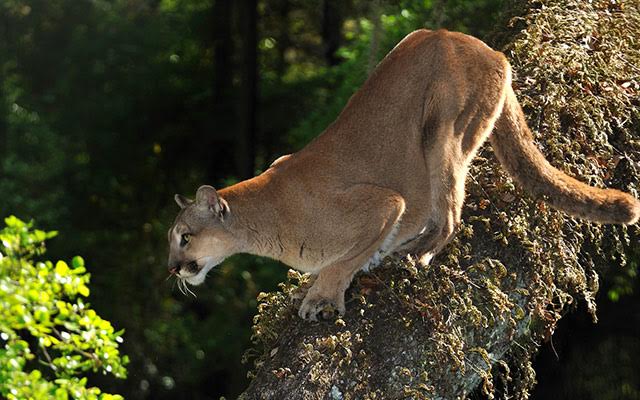
The Nature Conservancy is leading an effort to establish links between existing spaces and panther habitat with a goal of ensuring permanent protection for 7,300 acres. They have already protected thousands of acres of prime panther habitat within the Greater Everglades and protected land on the Caloosahatchee River. Protected only hours before foreclosure, this land purchase secures a highly used passage for panther crossing the Caloosahatchee River and looking for new habitat. Without this property, extinction was a near certainty but with this link permanently intact, the Conservancy is determined to build on this foundation, by protecting and restoring key links north of the river up into central Florida.
Read more about their work here:
African Parks
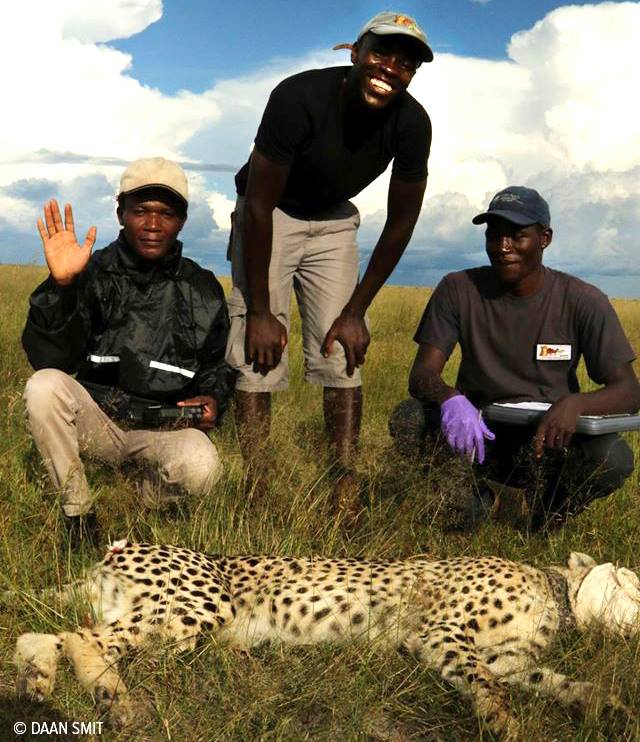
In January 2017 Big Cat Rescue donated to African Parks, a non-profit conservation organization that takes direct responsibility for the rehabilitation and long-term management of National Parks and protected areas in partnership with governments and local communities. They currently manage ten parks in seven countries: Chad, Central African Republic (CAR), Congo, Democratic Republic of Congo (DRC), Malawi, Rwanda and Zambia – covering an expansive six million hectares.
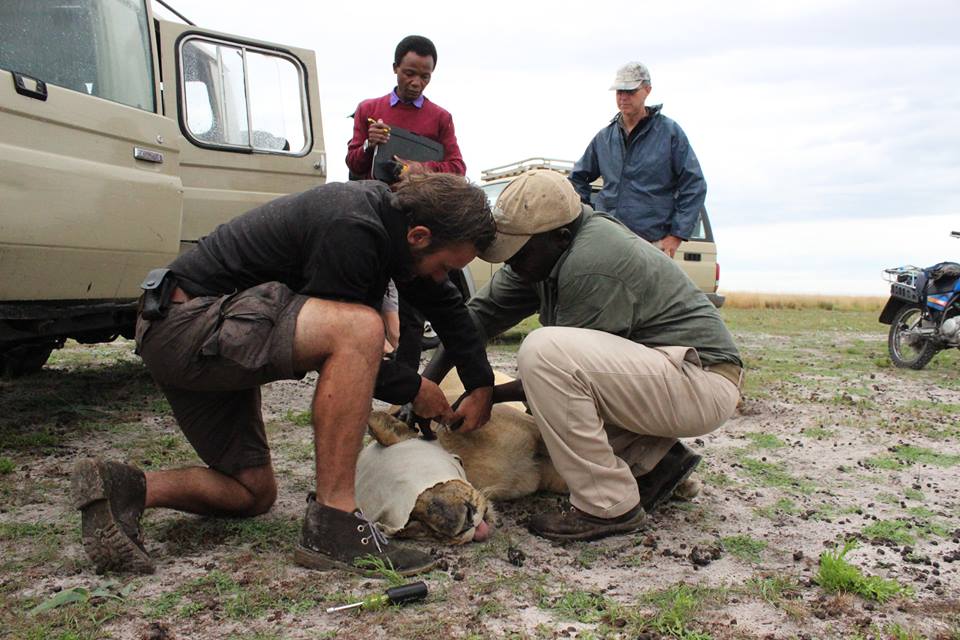
African Parks focuses on effective law enforcement measures, conflict mitigation schemes, and community engagement in order to protect Threatened species such as lions, leopards and cheetah, along with providing them with the habitat and security of core areas the animals need in order to breed and thrive.

They undertake wildlife monitoring, monitoring individual animals, through collaring or fitting tracking devices, to gather critical information on ecology and behavior, survivorship or mortality, and advance knowledge on the ecosystem as a whole, as well as how to better manage the wildlife within them. Through monitoring efforts, they can establish the ways in which they focus resources. Research is a vital part of monitoring the health of the ecosystem and also an important way to track the management progress of the park. Regular censuses provide essential information on wildlife trends, which even with the best monitoring can take several years to determine, but ultimately dictate whether interventions are working.
Finally African Parks has the largest counter-poaching force in Africa with over 600 rangers on staff. Proper and frequent training is given to the rangers to to create an able and well-disciplined team who on foot, horseback, boats, vehicles and aerial, conduct year round patrols providing security for the wildlife against poachers and other illegal activities.

Tsavo Cheetah Project
In Feb 2017 Big Cat Rescue donated to The Tsavo Cheetah project. The Tsavo Ecosystem has been concluded as a priority focal area for cheetah research and conservation. Covering an area of 16,000 square miles (42,000 square kilometres) the Tsavo Ecosystem in south eastern Kenya, comprises the unfenced TsavoWest and Tsavo East National Parks and a diverse range of ethnic communities and tribes. Increasing human populations and demand for land and settlement is causing ever-closer interaction between humans and wildlife within the ecosystem, leading to conflict and livestock depredation. Since 2011, in cooperation with the Kenya Wildlife Service, the project has conducted research into the conservation and population status of the cheetah, beginning within the region of southern Tsavo East. There are many misconceptions among local residents on the cheetah’s behavior and ecology. Many people fear the cheetah, unaware of its non- aggressive nature. As a result, reports of unnecessary killings of this threatened cat continue to occur in the vicinity, even within the park’s boundaries by encroaching pastoralists. Local poaching in the study area for bush-meat includes cheetahs main prey species and has even caused cheetah deaths due to indiscriminate snaring.
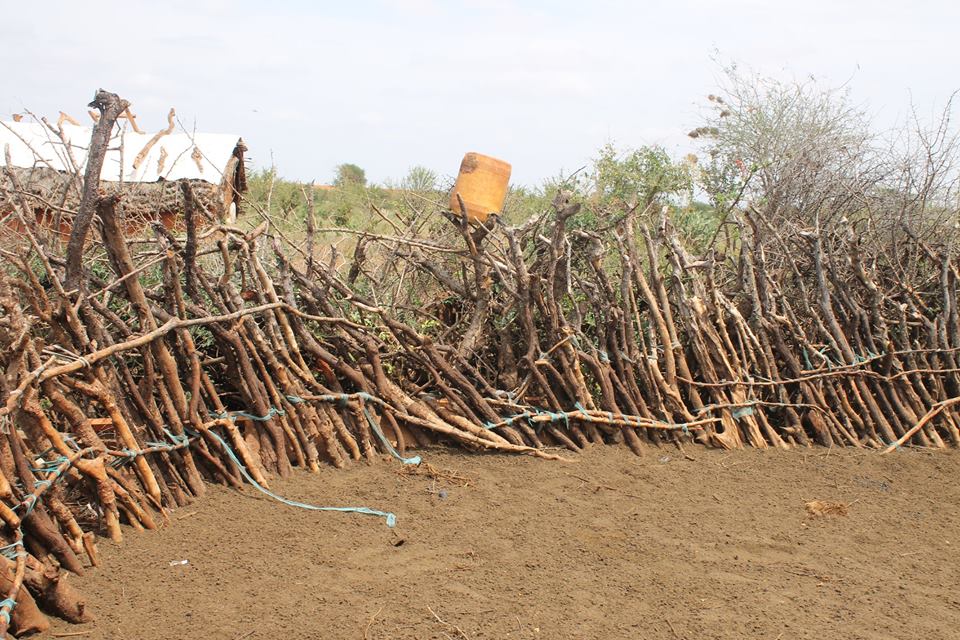
The aim of the Tsavo Cheetah project is to protect and conserve the Tsavo ecosystem cheetah population for the long-term survival of the species. They work with stakeholders and communities in addition to governmental bodies to foster the coexistence with local residents and influence wildlife laws and policies.

Rainforest Trust
Big Cat Rescue made a donation to the Rainforest Trust, to benefit Jaguars, through their Securing a Missing Link in the Amazon project. With a $1 for $1 match offered by the Rainforest Trust as a result of an anonymous donor, our donation of $2500, doubled to $5,000!
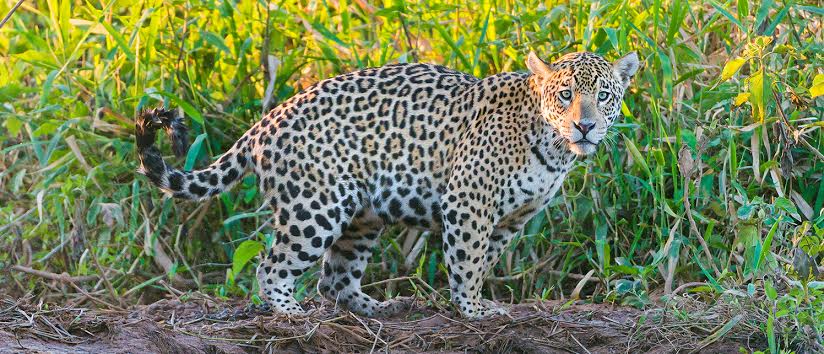
The Rainforest Trust and their local parter, Center for the Development of an Indigenous Amazon (CEDIA) are working to protect a missing link that will create a combined 7.8 million-acre tai-national corridor, safeguarding critical Amazon Rainforest Habitat across Peru, Ecuador and Colombia. The missing link corridor will be secured by expanding a current Reserve of more than 1.3 million acres, protecting against illegal logging, oil exploitation and agricultural enrichment.
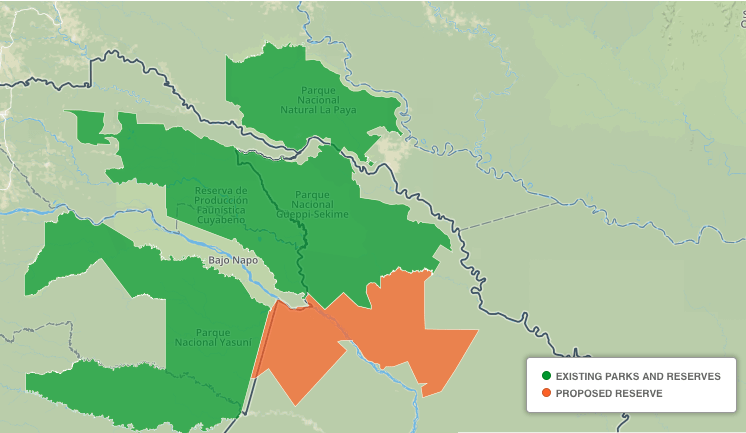
The reserve expansion will incorporate involvement from resident indigenous communities to strengthen the protection and management of the entire Güeppí region of northwest Peru. Only one community exists within the proposed expansion of Airo Pai, a small Secoya settlement named Puerto Estrella. The Secoya people are believed to be one of the most ancient groups living in the Amazon and are strong proponents of conservation initiatives.

To protect this vast area of Amazonian lowlands from further exploitation, Rainforest Trust will work with CEDIA and local indigenous communities to implement an integrated surveillance and control program that includes highly trained forest guards.
Research and Articles by Lauren Buckingham
See More InSitu Work Funded by Big Cat Rescue
See the current year of InSitu work here: https://bigcatrescue.org/insitu/
See InSitu work from 2020 here: https://bigcatrescue.org/insitu2020/
See InSitu work from 2019 here: https://bigcatrescue.org/insitu2019/
See InSitu work from 2018 here: https://bigcatrescue.org/insitu2018/
See InSitu work from 2017 here: https://bigcatrescue.org/insitu2017/
See InSitu work from 2016 and before here: https://bigcatrescue.org/insitu2016/



